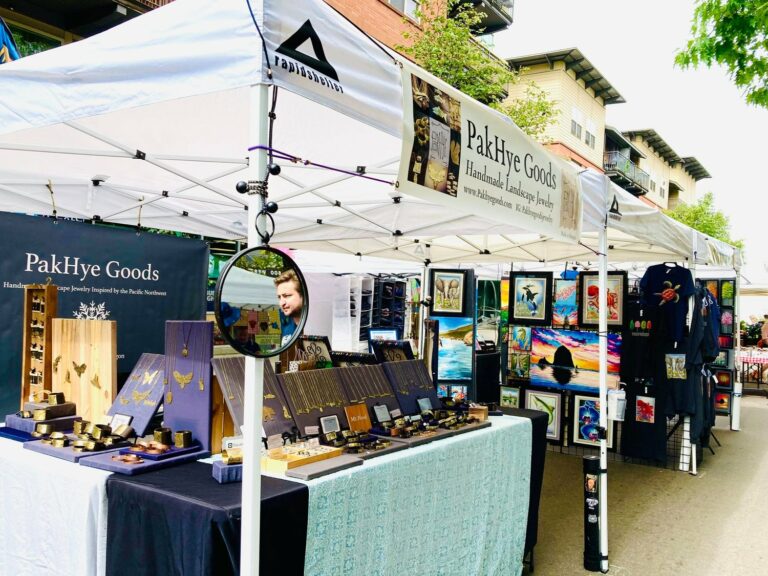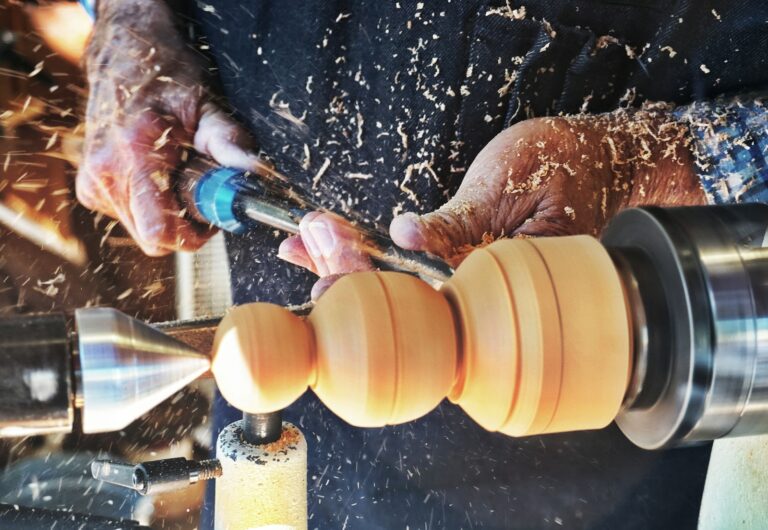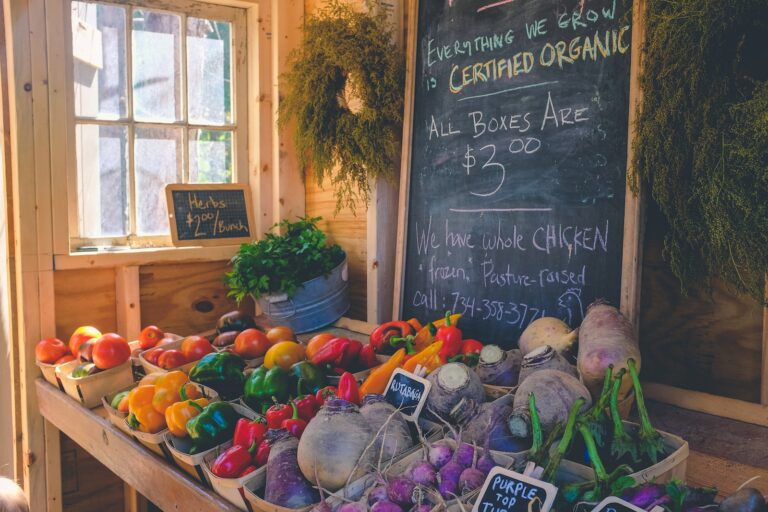Farmers’ markets are becoming increasingly prevalent worldwide as more people seek to connect with their food sources and support local businesses. If you’re an artisan looking to sell your handcrafted products, the farmers market can be an excellent platform to showcase your work and connect with potential customers. From homemade jewelry to artisanal foods and everything in between, there’s a growing demand for high-quality, handmade products at farmers’ markets.
In this post, we’ll explore the world of artisanal offerings and share tips on how to sell your handcrafted products at the farmer’s market. Whether you’re a seasoned artisan or just starting out, this post will help you make the most of this exciting opportunity to showcase your work and connect with customers in your local community.
Choosing the Right Products
Choosing the right handcrafted products to sell at the farmers market can be challenging, especially if you’re new to the market scene. Here are some tips to help you choose the right products that will attract customers and generate sales:
- Focus on Your Strengths: Consider your skills and expertise and focus on products that showcase your strengths. If you’re skilled in woodworking, for example, consider selling handcrafted cutting boards or kitchen utensils. If you have a talent for knitting, consider selling hats, scarves, or blankets.
- Look for Unique Products: Look for products that are unique and different from what other vendors are selling. Consider creating your own designs or adding a unique twist to a popular product.
- Consider Seasonality: Think about the seasonal demand for specific products. In the summer, for example, customers may be more interested in handmade jewelry, while in the fall, they may be more interested in scarves and hats.
- Research Your Market: Take a look at what other vendors are selling at the farmer’s market and consider what products are in demand. Talk to customers and ask them what they’re looking for.
- Choose High-Quality Materials: Use high-quality materials to create your products. Customers are more likely to buy products that are well-made and durable.
Remember to stay true to your brand and focus on creating products that showcase your unique style and expertise.

Displaying Your Products
Once you have chosen the right handcrafted products to sell at the farmers market, the next step is to create an eye-catching display that will attract customers and showcase your work. Here are some tips for displaying your products:
- Create a Cohesive Look: Choose a color scheme or theme that ties your products together and creates a cohesive look. This can help your booth stand out and attract customers.
- Use Height and Depth: Use shelves, risers, or other props to add height and depth to your display. This will help your products stand out and create visual interest.
- Use Lighting: Use lighting to highlight your products and create a warm and inviting atmosphere. String lights, spotlights, or even candles can help create a cozy and inviting vibe.
- Offer Samples: If you’re selling food products, consider offering samples to customers. This will give them a taste of your product and may entice them to buy more.
- Use Signage: Use clear and attractive signage to let customers know what you’re selling and how much it costs. Make sure your signage is easy to read and consistent with your brand.
- Consider Packaging: Use attractive and eco-friendly packaging to showcase your products. This can help your products stand out and may encourage customers to buy more.
Remember to keep your booth organized and clean, and to always be friendly and approachable to customers.
Consider Seasonality
One of the key factors to keep in mind when selling handcrafted products at the farmer’s market is seasonality. Different products have different seasonal demands, and it’s important to tailor your offerings accordingly. Here are some tips for considering seasonality when selling at the farmer’s market:
- Plan Ahead: Think ahead to the upcoming seasons and plan your product offerings accordingly. For example, in the summer, customers may be more interested in light and colorful products such as jewelry, sun hats, and summer dresses, while in the fall, they may be more interested in warm and cozy products such as scarves, hats, and knitwear.
- Take Advantage of Holidays: Holidays such as Christmas, Valentine’s Day, and Mother’s Day can be a great opportunity to sell themed products. Consider creating special holiday-themed products that customers will be more likely to buy as gifts.
- Offer Seasonal Products: Consider offering seasonal products such as pumpkin spice candles in the fall or citrus-scented soap in the summer. This can help create a sense of excitement and urgency around your products.
- Highlight Seasonal Ingredients: If you’re selling food products, highlight seasonal ingredients in your offerings. For example, in the summer, customers may be more interested in fresh berries and vegetables, while in the fall, they may be more interested in apples and pumpkins.
- Stay on Trend: Keep up with current fashion and home decor trends to create products that are in demand. For example, if the farmhouse-style decor is popular, consider creating handcrafted wooden signs or rustic home accessories.
By considering seasonality when selling handcrafted products at the farmers market, you’ll be able to tailor your offerings to meet customer demand and stay competitive in the market. Keep an eye on current trends and upcoming holidays to create products that customers will be excited to buy.

Marketing Your Handcrafted Products
Marketing is a crucial aspect of selling handcrafted products at the farmers’ market. While having a high-quality product and an attractive display is important, it’s equally important to get the word out and attract customers to your booth. Here are some tips for effectively marketing your handcrafted products:
- Use Social Media: Use social media platforms such as Instagram and Facebook to promote your products and engage with potential customers. Post photos of your products, share your market schedule and interact with your followers to build a loyal customer base.
- Offer Incentives: Offer special promotions or discounts to customers who follow you on social media or sign up for your email list. This can help build a loyal customer base and encourage repeat business.
- Collaborate with Other Vendors: Collaborate with other vendors at the farmers market to cross-promote each other’s products. Offer a discount to customers who purchase from both your booth and another vendor’s booth.
- Attend Local Events: Attend local events such as craft fairs or art shows to showcase your products and attract new customers. Be sure to bring business cards or flyers with your market schedule to promote your booth at the farmers market.
- Offer Custom Orders: Consider offering custom orders to customers who want a personalized or unique product. This can help build a loyal customer base and differentiate your products from those of other vendors.
- Display Your Process: Consider displaying your process and creating a live demonstration of your handcrafting at your booth. This can give customers a unique insight into the creative process of your products and help build a connection with them.
By effectively marketing your handcrafted products, you can attract new customers and build a loyal following. Use social media, collaborate with other vendors, attend local events, and offer custom orders to differentiate yourself and promote your brand.
Be sure to stay friendly and approachable to customers, and always be willing to answer questions and engage with them to build a strong customer base.
Pricing Your Products
Pricing is a crucial aspect of selling handcrafted products at the farmers’ market. It’s important to strike the right balance between making a profit and keeping your products affordable for customers. Here are some tips for effectively pricing your handcrafted products:
- Calculate Your Costs: Calculate your costs of production, including materials, labor, and overhead expenses such as booth rental fees. This will help you determine a minimum price point that covers your costs and ensures you make a profit.
- Research Your Competition: Research other vendors at the farmers market and online to determine how they price similar products. This will give you an idea of the market rate and help you price your products competitively.
- Consider Your Target Market: Consider your target market and their willingness to pay for handcrafted products. If your target market is more price-sensitive, you may need to price your products lower to remain competitive.
- Test Your Prices: Test your prices by experimenting with different price points and monitoring customer reactions. If you notice that your products are not selling, you may need to lower your prices or adjust your product offerings.
- Offer Bundles: Offer bundles or discounted pricing for customers who purchase multiple products. This can encourage customers to buy more and increase your overall sales.
- Factor in Your Time: Factor in your time when pricing your products. While it’s important to price your products competitively, you also need to ensure that you’re compensated for your time and effort.
By effectively pricing your handcrafted products, you can ensure that you’re making a profit while keeping your products affordable for customers. Calculate your costs, research your competition, consider your target market, test your prices, offer bundles, and factor in your time to strike the right balance. Be sure to stay flexible and open to adjusting your prices based on customer feedback and market conditions.

Building Relationships with Customers
Building relationships with customers is a crucial aspect of selling handcrafted products at the farmers’ market. By building a loyal customer base, you can increase your sales, generate repeat business, and create a positive reputation for your brand. Here are some tips for effectively building relationships with customers:
- Be Friendly and Approachable: Greet customers with a smile, engage in small talk and be willing to answer their questions. Make sure to create a welcoming atmosphere that encourages customers to visit your booth.
- Share Your Story: Share your story with customers and create a personal connection with them. Talk about your inspiration for your products, your creative process, and your vision for your brand. This can help customers feel invested in your products and create a deeper connection with your brand.
- Offer Samples: Offer samples of your products to customers so that they can experience them firsthand. This can help customers make informed purchasing decisions and create a positive impression of your brand.
- Collect Customer Feedback: Collect feedback from customers and use it to improve your products and your overall customer experience. Consider offering customer surveys or comment cards to gather feedback and make improvements.
- Follow Up: Follow up with customers after the market to thank them for their purchase and encourage them to visit your booth again. Consider sending a personalized email or a handwritten note to create a lasting impression and build a relationship with the customer.
- Offer Loyalty Programs: Offer loyalty programs or rewards to customers who make repeat purchases. This can help create a loyal customer base and increase your overall sales.
By building relationships with customers, you can create a loyal following and generate repeat business. Be friendly and approachable, share your story, offer samples, collect feedback, follow up, and offer loyalty programs to create a positive experience for customers and build a lasting relationship with them. Remember that building relationships takes time and effort, but it’s worth it in the long run to create a successful business.
In conclusion, selling handcrafted products at the farmers’ market can be a fulfilling and profitable business venture. By focusing on artisanal offerings, considering seasonality, pricing effectively, displaying products attractively, marketing your brand, and building relationships with customers, you can create a successful and sustainable business.
Remember to stay flexible and open to adjusting your approach based on customer feedback and market conditions. By keeping these tips in mind, you can create a positive and memorable experience for customers, build a loyal following, and establish a thriving business at the farmers market.
So, get creative, have fun, and enjoy the process of bringing your handmade products to market!











